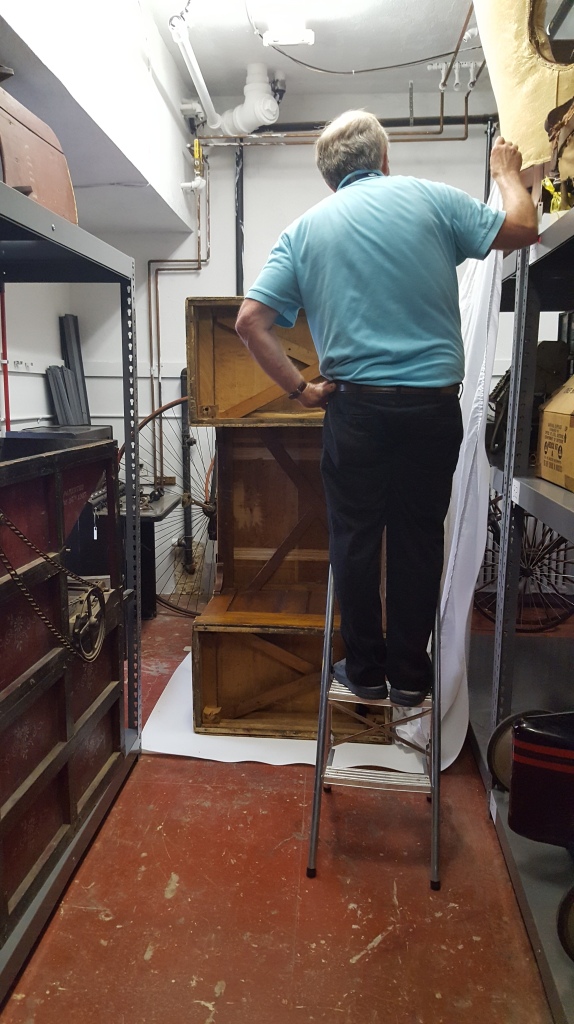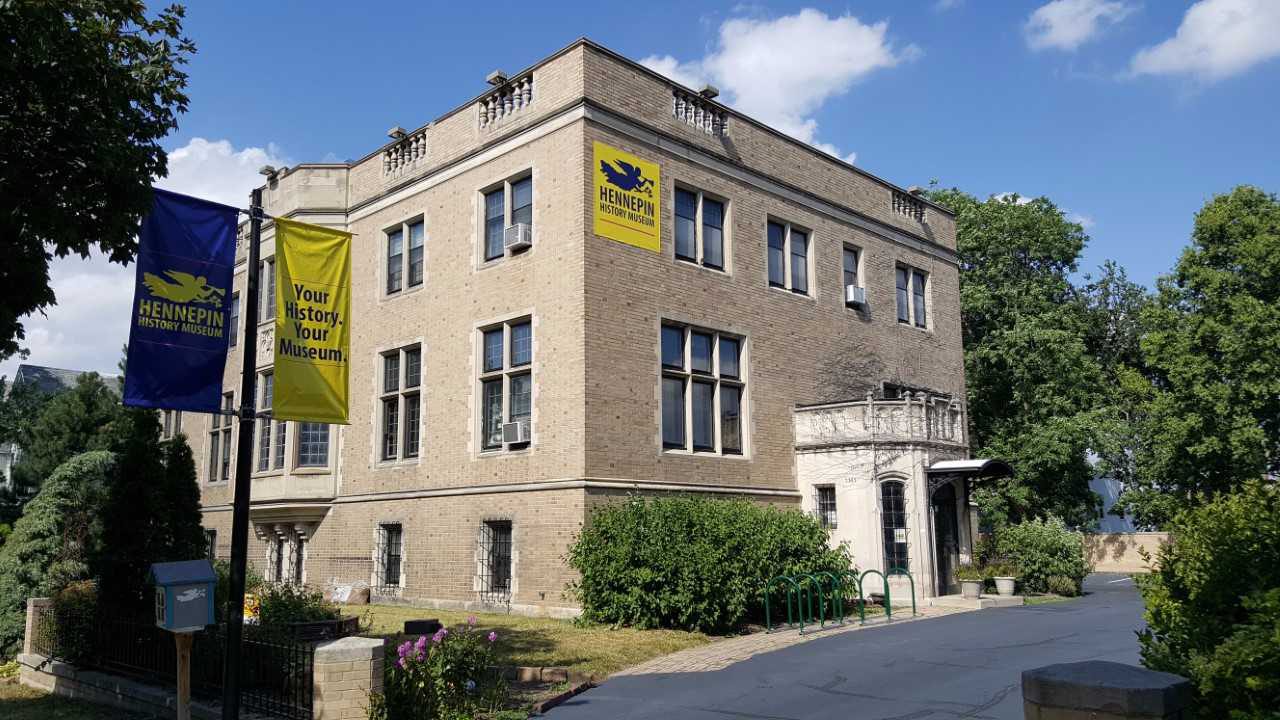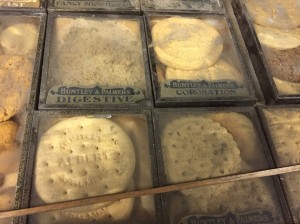By Evan Walker
Today’s Object Lesson might be one of the most exciting objects so far–at least to photograph. At almost 5 feet wide by 3 feet deep, the only way to fit the entire desk in the camera frame was to turn it on its side. Then one of us stood on either side of the desk and held up a white sheet in order to get a clean background.
If you ask me, the photos of the photo shoot are almost as fun as the final artifact photo!

Above: The author demonstrates the many duties of a museum intern!


This desk once stood in the office of William Watts Folwell, first president of the University of Minnesota. Born in New York in 1833, he served as an engineer in the Civil War. When he became president of the University, it had eight professors and 100 students, but he was an instrumental figure in expanding the college and making it more useful for all Minnesotans. By the time he stepped down in 1884 the U had about 960 students, and he continued as a professor and librarian for several years.
Folwell raised a few eyebrows by advocating for a full graduate program and the establishment of museums and libraries at the U, rather than only the more traditional undergraduate program focusing on Greek and Latin. He was described as “a knight errant of the new education… interested in everything from Plato to hog cholera.” Students were more familiar in their descriptions, apparently calling him “Uncle Billy”.
Another of Folwell’s accomplishments was his four-volume history of Minnesota, which he wrote over the course of nine years.
The desk itself is made from oak, with some poplar wood. Each of the 10 drawers can be locked, and there are holes on the top of the desk. These may have been used to attach more shelves or possibly other articles, like a lamp or inkwell.
About the Author
Evan Walker recently completed a summer internship at HHM. He enjoys playing tennis and sharing stories about people and events from the past. Evan will be going into his sophomore year at Luther College in the fall, studying history.
Sources
Report of the University of Minnesota, 1884-1886
Support Local History
The majority of our operating support comes from the generous support of individuals like you. Like what you see? Please click here to support this project and to preserve local history. Thank you!




 The iron balls on the ends of the handle allow the press to be closed with one good twirl.
The iron balls on the ends of the handle allow the press to be closed with one good twirl.
